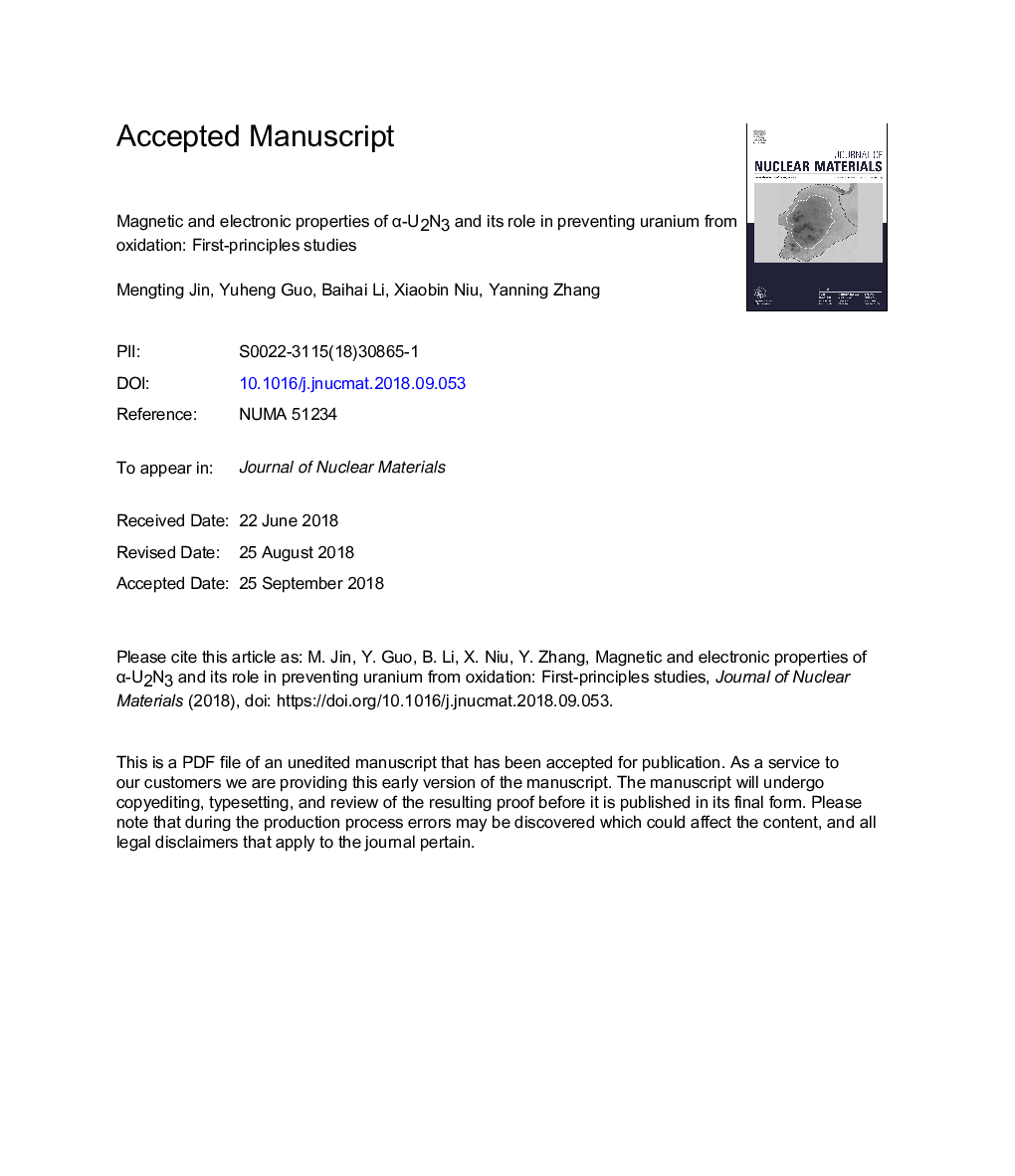| Article ID | Journal | Published Year | Pages | File Type |
|---|---|---|---|---|
| 11011334 | Journal of Nuclear Materials | 2018 | 18 Pages |
Abstract
Nitriding treatments have been adopted as an effective way to enhance the anticorrosion properties of uranium metal in ambient conditions but the mechanism remains unclear. We tackle this issue through first principles studies for the geometric, magnetic, electronic and vacancy properties of bulk α-U2N3, as well as its reaction with oxygen. The formation of N (U) single vacancy in α-U2N3 is almost spontaneous under U-rich (O-rich) conditions. The adsorption of oxygen up to 300% of U contents, both on vacancy sites and in interstitial sites, may further gain energy by forming α-U2N3Ox and UO3 frameworks. Energy barriers for oxygen diffusion through α-U2N3 layers are larger than 1.5â¯eV, and hence the thin U2N3 layer prevents the oxidation in deep uranium layers. The structure of α-U2N3O3 is chemically disordered and the final oxidization products are most likely N2 and UO3. Our theoretical studies provide useful information to understand the oxidation process of α-U2N3, and also give insights in the further development of surface treatment technologies for uranium.
Related Topics
Physical Sciences and Engineering
Energy
Nuclear Energy and Engineering
Authors
Mengting Jin, Yuheng Guo, Baihai Li, Xiaobin Niu, Yanning Zhang,
